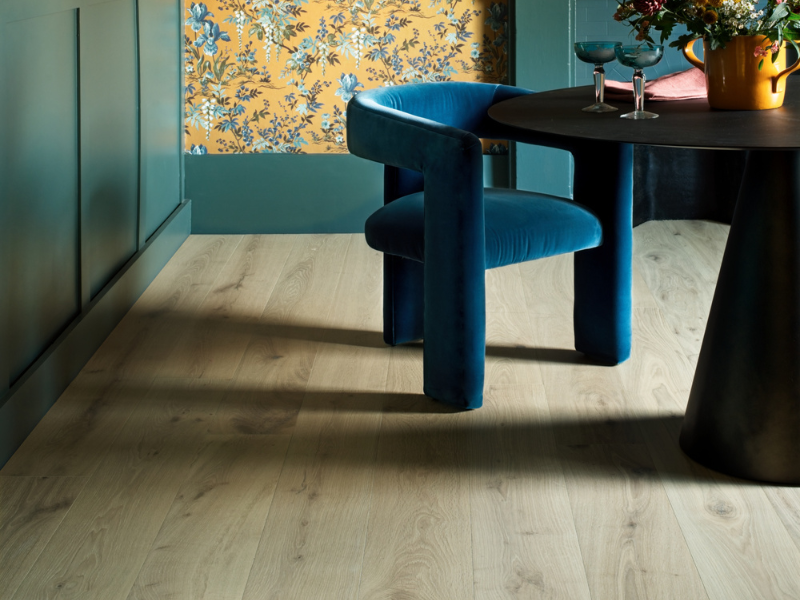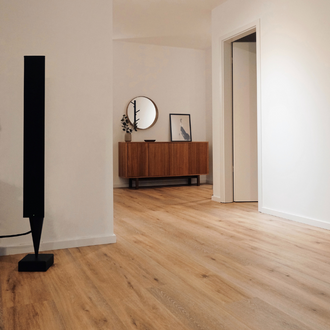Misconceptions About Engineered Wood Floors
9th Nov 2023
As the demand for sustainable and eco-friendly building materials increases, engineered wood flooring has become a popular choice among homeowners. However, there are still some misconceptions surrounding this type of flooring that can deter people from choosing it for their homes. In this blog post, we will debunk 8 common misconceptions about engineered wood flooring.
Misconception #1: It's Not Real Wood
One of the biggest misconceptions about engineered wood flooring is that it is not real wood. In reality, engineered wood flooring is made up of multiple layers of real wood that are bonded together with an adhesive. The top layer, also known as the wear layer, is made from a high-quality hardwood such as oak, maple, or walnut. This layer is what gives engineered wood flooring its beautiful and authentic look.
Misconception #2: It's Not Durable
Some people believe that engineered wood flooring is not as durable as solid wood flooring. However, this couldn't be further from the truth. Due to its construction, engineered wood flooring is actually more stable and less prone to warping than solid wood flooring. It can also withstand changes in temperature and humidity, making it a great choice for most areas of the home.
Misconception #3: It's Only Suitable for Dry Areas
Another common misconception is that engineered wood flooring can only be installed in dry areas of the house, such as living rooms or bedrooms. While it is true that excessive moisture can damage any type of wood flooring, engineered wood flooring is actually more resistant to moisture than solid wood flooring. This is because the layers in engineered wood provide extra protection against moisture. Therefore it is perfectly suitable for kitchens and utility areas or anywhere where puddles are not left standing on the floor (so not the bathroom!)
Misconception #4: It's Difficult to Install
Many people believe that installing engineered wood flooring is a difficult and time-consuming process. However, thanks to advancements in technology, engineered wood flooring can now be installed as a floating floor. This means that the planks can be clicked or locked together without the need for nails or glue. As a result, installation is quick and easy, making it a great DIY project for homeowners. The beauty about engineered wood flooring is that it can be laid floating, or glued down, whichever your preference.

Misconception #5: It's Expensive
Compared to other types of flooring, engineered wood flooring may seem expensive at first glance. However, when you consider its durability and longevity, it is actually a cost-effective option for your home. It is also far more cost effective than a solid wood, since you are not paying for a solid plank of hardwood, most of which sits beneath the surface and will never be seen. Additionally, because engineered wood flooring is made from real wood, it adds value to your home and can increase its resale value.
Misconception #6: It Can't Be Refinished
Another common misconception is that engineered wood flooring cannot be refinished. While it's true that the wear layer of engineered wood flooring is thinner than solid wood, it can still be sanded and refinished multiple times. This makes it a great choice for high-traffic areas of your home.
Misconception #7: It's Not Environmentally Friendly
There is a misconception that engineered wood flooring is not environmentally friendly because trees are cut down in the making of it. In reality, engineered wood flooring today is a very environmentally-friendly flooring option. All of our engineered wood floors are FSC and PEFC certified, meaning that they come from sustainable supply chains and managed forests.
The process of manufacturing engineered wood is also far more eco friendly than the manufacturing of most other hard flooring options, for example vinyl flooring which is made from PVC. Engineered wood flooring also does not require adhesives to install, and is completely recyclable.
In comparison to solid hardwood, engineered wood flooring is considered to be far more sustainable since it does not use pointless amounts of hardwood in its structure - effectively wasting precious resources on parts of the floor which will never even be visible and add no structural benefits.
Additionally, since engineered wood flooring can be sanded and refinished, it has a longer lifespan and reduces the need for replacement, making it a more sustainable choice for your home.
We hope that by debunking these misconceptions and highlighting the benefits of engineered wood flooring, you can make an informed decision about whether or not it is the right choice for you. If you have any queries at all, our team are on hand to discuss all things flooring with you! Give us a call, drop us an email, or chat to us via Live Chat from Monday - Friday 9.30am - 5pm.

